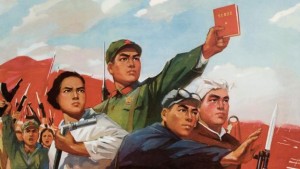The photo in color titled In A School in China: Political Education: Children, With a Red Scarf, Rausing Fist in Front of the Portrait of Mao Zedong (1973) available through Bridgeman Images, the author photographed the moment Chinese girls in school uniform are raising their fists as one stands on stage in front of a poster of Mao Zedong. Because of the uniform these girls are wearing they are able to express themselves as leaders, speakers and at the same time followers of Mao Zedong’s social and political beliefs, but only through the acceptance of the uniform.
The power of the uniform similar to the Red Guard uniform in terms of connotations as explained by author Li Li in Uniformed Rebellion, Fabricated: A Study of Social History of Red Guards in Military Uniforms during the Chinese Cultural Revolution and Beyond, she says that when in uniform the people were able to represent their support for the revolution, Mao, and that they were all no different from one another in terms of social classes.[1] Although in this case the children that were too young to be a Red Guard so in school uniform they could show their support. The white short-sleeved shirt these girls are wearing carries that significance that male and female workers would wear in the mid 1900s. The white short-sleeved like the People’s Liberation Army weren’t designed for a specific gender which was the ideology during the time into the end of the Cultural Revolution.[2] This meant that women could be seen through a different view, yet only when the uniform was a part of their identity. The white shirt was also paired with a red handkerchief that was worn around the neck, which was the color of the revolution.[3]The girls in the picture are also wearing flower patterned skirts, instead of pants, this represented the reminder that although they could be active in the movement it was limited.
These young Chinese girls are gathering in a school auditorium and not in a public space, they still feel powerful because the photograph shows the different levels of positions that could be attained even if they were wearing the same simple uniform. There was student on the stage and the rest as people from the audience. Lastly another important aspect of this photograph is the fists that are being raised with momentum because some of the girls’ hands are blurry in the photo, which is symbolizing the strength of their support.
Being in uniform was an opportunity for young girls like older women to participate and lead a movement. In the photograph the girl on stage is pictured standing aside from the microphone which represents needed someone to help their voice be heard, I think is significant to this idea that in uniform there was female voice and presence.
the denotation/connotation could also be paired in terms of 1) the uniform 2) mao’s portrait 3) on-stage and off-stage 3) raised fists/performance. then you can explain the signified meanings of each sign.
[1] Li, Li. “Uniformed Rebellion, Fabricated: A Study of Social History of Red Guards in Military Uniforms during the Chinese Cultural Revolution and Beyond,” in Fashion Theory 14, no. 4 (Berg: 2010) 441
[2] Li, Li. “Uniformed Rebellion, Fabricated: A Study of Social History of Red Guards in Military Uniforms during the Chinese Cultural Revolution and Beyond,” in Fashion Theory 14, no. 4 (Berg: 2010) 447
[3] Tina Mai Chen. “Proletarian White and Working Bodies in Mao’s China,” in Positions 11, no. 2 (Duke University Press: 2003) 382

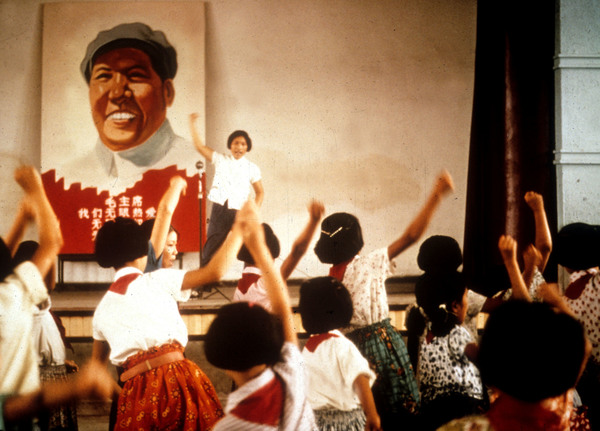
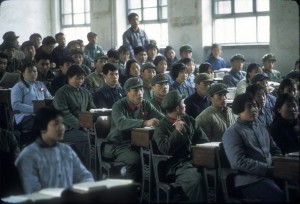
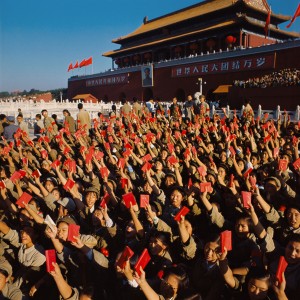

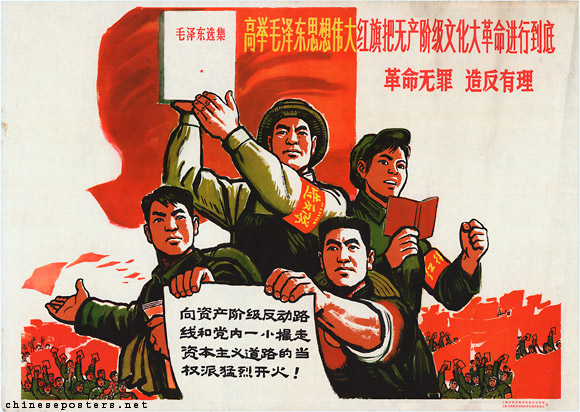
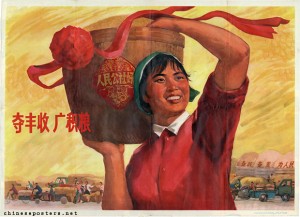
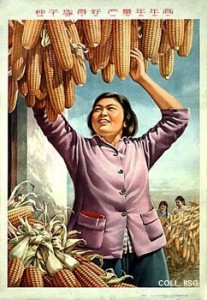 “The seeds have been well selected, the harvest is more bountiful every year”, 1964. Artist unknown, photo taken from: chineseposters.net
“The seeds have been well selected, the harvest is more bountiful every year”, 1964. Artist unknown, photo taken from: chineseposters.net